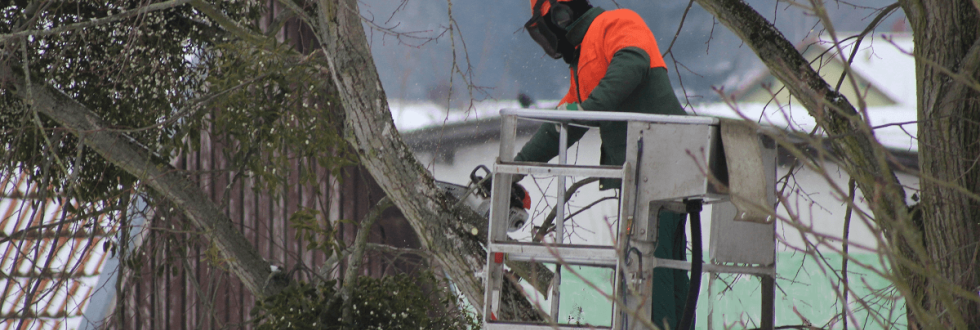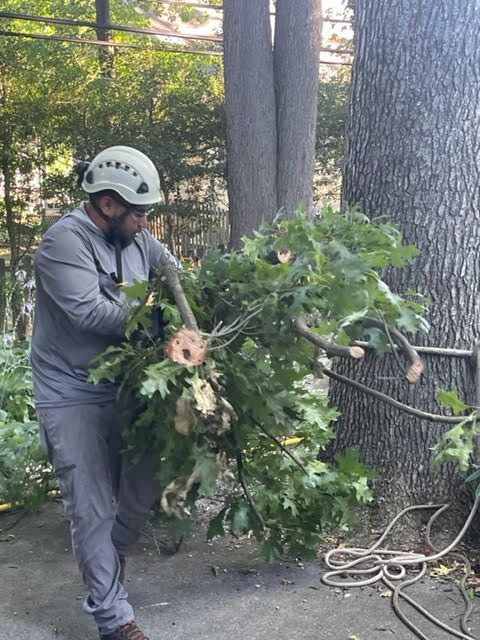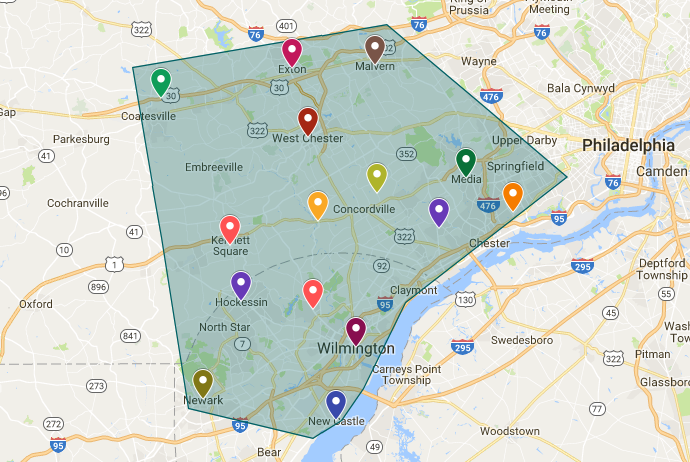
Frequently Asked Questions About Tree Trimming and Pruning
Tree trimming and pruning are essential parts of tree care, as these practices can significantly impact the health and lifespan of your tree. However, homeowners often have many questions about trimming and pruning: how often should trimming and pruning take place? What if I have a tall tree? Can I trim my neighbor’s overhanging tree? This page will address many frequently asked questions about tree trimming and pruning.
Why Should I Trim or Prune My Trees?
The main reason to trim or prune your trees is that it helps keep them healthy. For example, if you notice dead or diseased branches on your tree, you should remove those branches to help prevent further damage or disease spreading to other parts of the tree. Another reason for pruning your trees is to help them grow stronger and healthier with more consistent growth patterns.
Other reasons for tree trimming and pruning include safety reasons, such as preventing limbs from potentially falling onto nearby structures like houses or power lines. Many homeowners who live near large trees may have this concern, especially during high winds or storms when large branches can fall off unexpectedly, causing damage to property as well as injury to people standing nearby.
What Is the Best Time of Year to Trim and Prune Trees?
Fall and winter are generally the ideal times to trim and prune trees. This is because deciduous trees lose their leaves in the winter, revealing all of the branches previously hidden under the foliage. This makes the task of diagnosing issues and trimming trees much more manageable. Bare tree canopies also make the tree structure much easier to see. As a result, arborists and other tree specialists can more easily remove dead or vulnerable branches.
In addition, trees and shrubs are dormant during winter, which halts growth until the following spring growing season. This inactivity means that wounds from trimming and pruning during late fall and winter will heal more quickly since the tree is not expending energy on new growth.
Another reason that the fall and winter are the best times for tree trimming and shrub pruning is that disease and insect damage are less likely. However, trimming at other times of the year is advisable if a tree has specific health or structural issues that need immediate care and the pruning is performed correctly.
How Often Do I Need to Have My Trees Trimmed and Pruned?
Tree trimming should be performed on a regular basis. Tree care professionals can trim most mature trees every 3-5 years, but your specific timeframe may vary. Reach out to a tree care specialist to inspect your trees, who can then consult you on the amount of regular maintenance needed. One benefit of regular trimming and pruning is that these services may help reduce potential liability for accidental injury or damage if a homeowner has routine maintenance records.
What’s the Difference Between Trimming and Pruning?
Tree trimming and pruning are terms that are often used interchangeably. However, there is a difference between the two. Tree trimming refers to removing branches or limbs or shaping the tree, while pruning refers to cutting back or removing damaged limbs to improve the overall health of the tree.
What If I Have a Very Tall Tree?
The larger a tree is, the greater the risk of harm to people and structures around it. For example, long, heavy branches extending over roofs, roads, and patios can break off during strong winds or storms. In addition, because of the size, trimming and pruning a very tall tree requires much more care, precision, and specialized equipment than a relatively small tree.
For example, most homeowners do not have anything to help them reach the top of a 30-foot-tall tree. Tree professionals, however, have specialized climbing equipment or vehicles like a bucket truck or a spider lift to help them reach the top of large trees.
If you have a large tree in your yard, contact a professional tree care company to handle any trimming and pruning work safely.
CALL US
302.478.3511
Serving DE, PA and MD
REQUEST A FREE, NO OBLIGATION CONSULTATION
OUR SERVICES
- Tree Cabling & Bracing
- Tree Trimming & Shrub Pruning
- Tree and Plant Health Services
- Fertilization & Soil Management
- Tree Lightning Protection
- Tree Inspection, Risk Assessment & Inventory
- Construction Site Tree Management
- Tree Removal & Clearing
- Stump Removal & Grinding Services
- Right of Way Clearing & Maintenance
- Emergency Tree Service
- Storm Damage Clean-up
- TreeFall Programs Available
Do You Remove Branches from a Property?
Our tree care services company removes branches from your property whenever we remove them as part of our trimming or pruning services.
Can I Trim and Prune Trees Myself?
You can trim and prune trees yourself, but proper trimming and pruning require a lot of training and knowledge to make the right cuts to preserve the tree’s health. Also, the bigger and more branches a tree has, the more difficult it is to prune. Calling a professional will help you get the best results, and if there are underlying issues, the professional may be able to catch them before major damage has occurred.
Can I Trim My Neighbor’s Tree Hanging Over My Fence?
This is one of the most common of our frequently asked questions about tree trimming and pruning. The answer depends on certain factors regarding the tree’s safety and can vary in different counties or states. However, in general, the following is often the case:
- If your neighbor’s tree poses a hazard and is hanging over your property, notify them immediately and request that they remove it. You may also hire a tree care professional to remove the portion of the tree that specifically overhangs your property.
- If your neighbor’s tree hanging over your property line is deemed non-hazardous, then your neighbor will not likely be deemed negligent. You can trim the overhanging tree branches, but only up to your property line and no further. And all the work must be performed while on your own side of the property line.
Should a Tree Trimming Contractor Be Licensed and Insured?
Yes! For your protection, make sure the tree service company you hire is licensed and insured. If an accident occurs on your property that results in property damage or some type of physical injury, you could be liable if your tree care professional is uninsured.

Stein Tree Service tree specialists are experienced and careful, and we are licensed and insured for our protection and yours.
Contact Stein Tree for Tree Trimming and Pruning
Stein Tree Service’s staff has hundreds of years of combined experience and we can answer your other frequently asked questions about tree trimming and pruning. Our company is the oldest independently owned tree service company in Delaware. Our staff of tree care professionals take pride in offering exceptional service. In addition to tree trimming and pruning services, we provide the following services:
Aston, PA
Bear, DE
Brandywine, DE
Chadds Ford, PA
Chester County, PA
Claymont, DE
Christiana, DE
Delaware
Elsmere, DE
Exton, PA
Fairfax, DE
Glasgow, DE
Glen Mills, PA
Greenville, DE
Hockessin, DE
Kennett Square, PA
Malvern, PA
Media, PA
New Castle, DE
Newark, DE
Newport, DE
Pike Creek, DE
Ridley Park, PA
Stanton, DE
Talleyville, DE
West Chester, PA
Wilmington, DE

